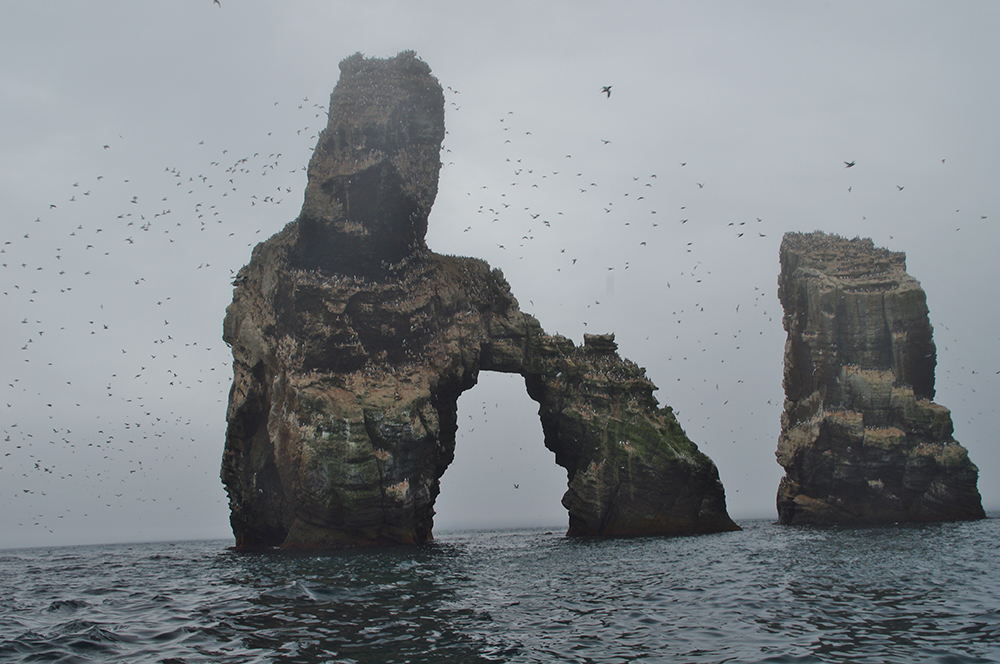Alaska Day: Appreciating Abundance
Published by Ocean Conservancy
From the rainforests of the panhandle to the remote and rocky Aleutians to the icy waters of the North Slope, most Alaskans see their waters as abundant in beauty, fish, birds and animals. When I asked an Iñupiaq Elder from Utqiaġvik (formerly Barrow) how he saw the sea ice off the shore, he said to him it was “a beautiful garden,” providing food and meaning for him and his family and his community.
Natural abundance of this kind is increasingly rare around the world. We hear regular reports about losses of habitat, overfishing, and the prospect of massive species extinctions worldwide. Alaska can be proud that it provides half the nation’s seafood from some of the world’s best-managed fisheries. Alaska can be proud that traditional Indigenous hunting practices continue to thrive and provide nourishment for body and soul. But Alaskans cannot take abundance for granted, as a few examples show.


In the late 1800s, Alaska’s first oil boom was the pursuit of the bowhead whale. Commercial whalers reduced the population to perhaps a thousand whales, stopping only when the markets for whale oil and baleen collapsed. Salmon fishery management was one of the big factors behind the push for statehood in the 1950s. Under federal management, most of the fish went to a few large companies operating fish traps near river mouths. Alaskans voted by a margin of 5 to 1 to ban fish traps, a law that took effect when the territory became a state. Today, many more people participate in salmon fisheries, providing many more jobs. In the 1980s, pollock fishing in the high seas of the central Bering Sea by foreign fleets led to the crash of that fish stock, which has yet to recover, illustrating what happens in the absence of sound fishing limits.
Fortunately, these are the exceptions. Today, bowhead whales flourish as does traditional whaling, in part due to innovative co-management approaches in which hunters work together with scientists and managers. In 1997 and 1998, sockeye salmon returns in Bristol Bay were surprisingly low. Managers shut the fishery and the fishermen agreed with the decision, despite the short-term hardship. Today, Bristol Bay remains one of the richest salmon fishing areas in the world, thanks to effective management and strong support from the fishermen themselves. In the U.S. waters of the southeastern Bering Sea, the pollock fishery remains robust under careful management, and continues to seek ways to reduce bycatch of king salmon and others species.


Alaska’s waters face the same threats as those seen elsewhere in the world. There is always a push to take a little more, to fit in another well or accommodate another ship. Pollution comes to Alaska’s waters from near and far, just as it does everywhere else. And Alaska is warming as fast as any place on the planet.
The good news is that many in Alaska recognize the importance of sound management and conservation. This does not mean preserving the marine environment at arm’s length, but enjoying the bounty of the fishes, birds and mammals, while making sure they remain healthy and plentiful. Another mine will provide jobs for now, as will more logging and more offshore oil activity. But a healthy ocean provides long-term employment, food and a deep sense of well-being and belonging that cannot be replaced.
The post Alaska Day: Appreciating Abundance appeared first on Ocean Conservancy.
Read the full article at: https://oceanconservancy.org/blog/2017/10/18/alaska-day-appreciating-abundance/


